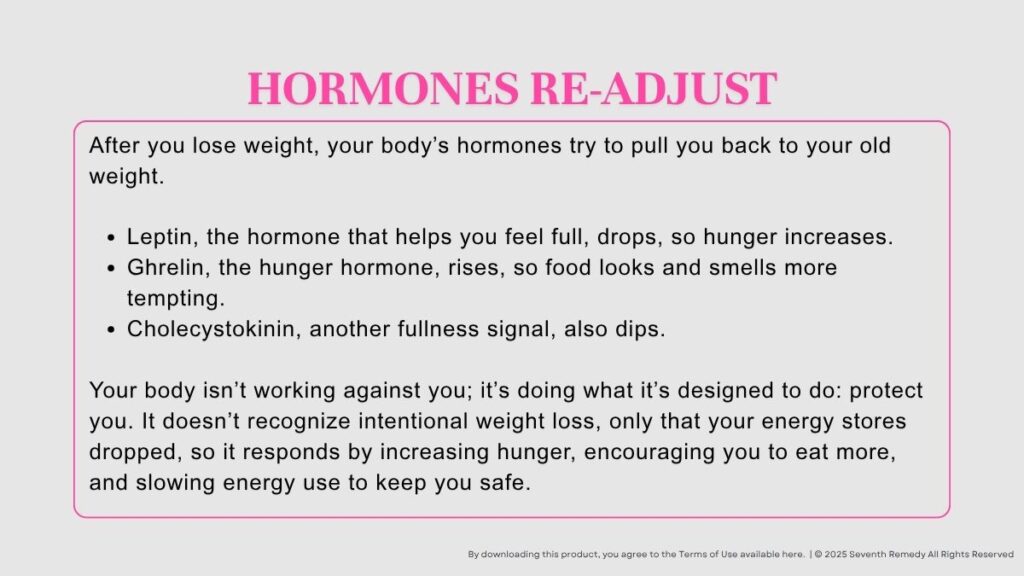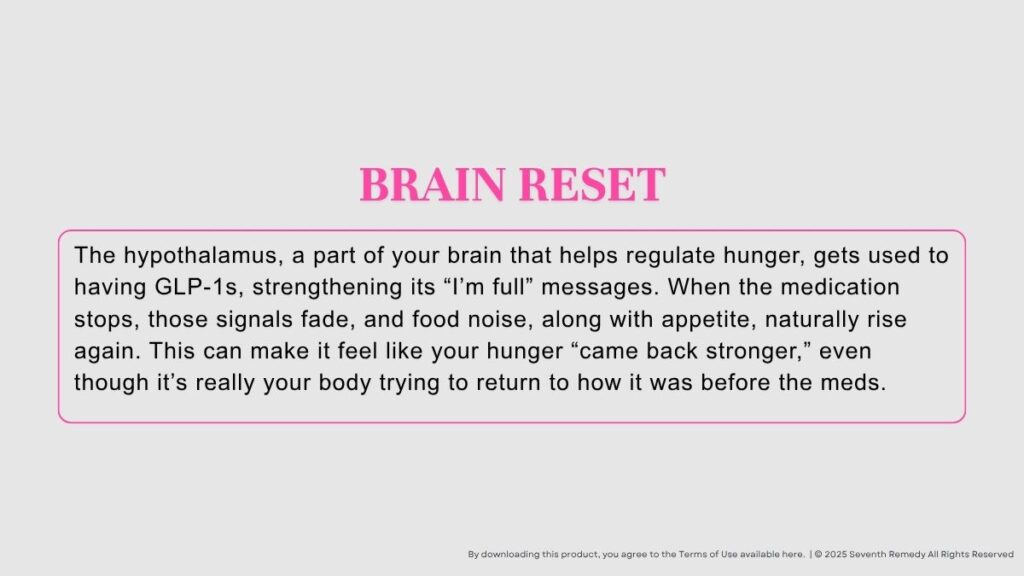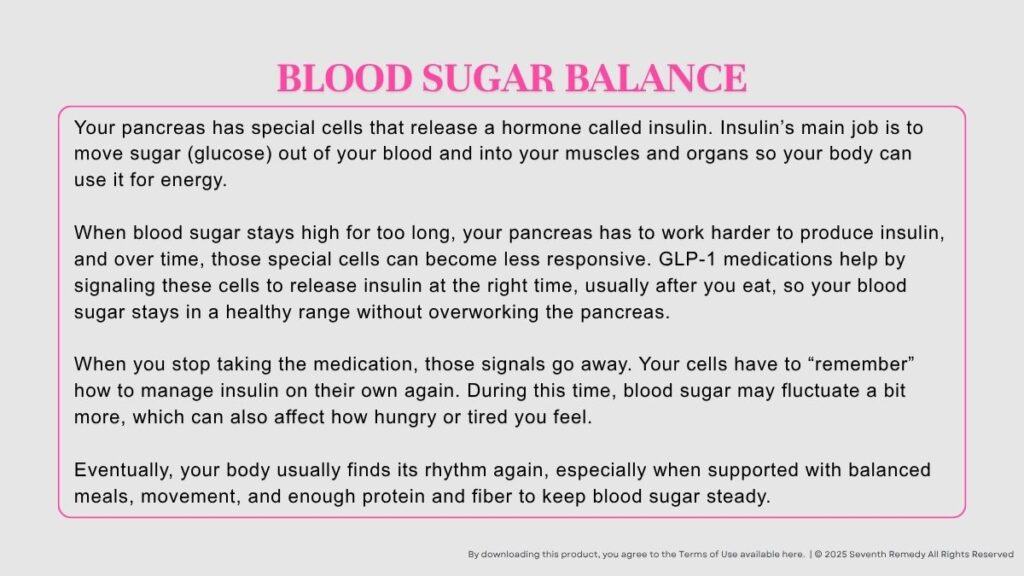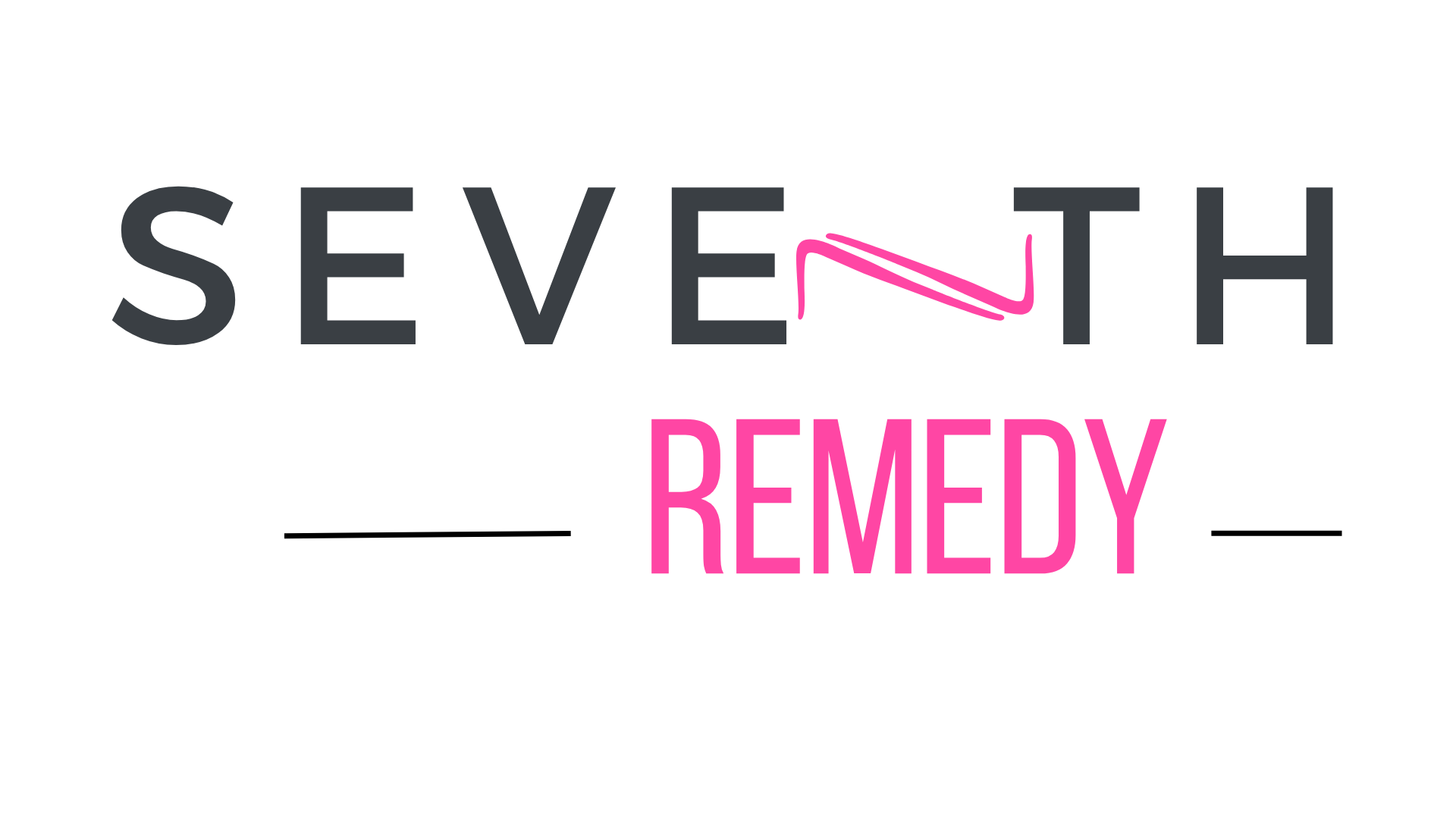Staying Strong After GLP-1s Is Possible
The decision to stay on GLP-1s, adjust your dose, or come off completely is yours and yours alone. It’s a choice to make with your doctor, not anyone else. Not a trainer, not a dietitian, not the internet. You get to decide what’s right for your body and your future.
But, if you ever decide to stop, it helps to know what actually happens inside your body when the medication ends, and what you can do to stay steady through it. Once you understand the science, it feels a lot less intimidating.
How the Body Gets Out of Balance
Weight gain usually builds slowly over time, and it is rarely caused by one single habit. Genetics play a role, but daily stress, poor sleep, less movement, and highly processed foods can throw off your body’s hunger and fullness signals as well as its energy balance. When this happens, the body stores more energy than it uses, and low-grade inflammation can begin to build. GLP-1s help calm some of those mixed-up signals and can even reduce or reverse that inflammation.
What GLP-1s Do While You’re Taking Them
GLP-1s medications copy a natural hormone your gut releases after you eat. This hormone helps your body handle food in a few smart ways. It tells your pancreas when to release insulin, slows how quickly your stomach empties so you stay full longer, and sends signals to your brain that help you feel satisfied sooner.
They also calm food cravings, help control appetite, and may even activate brown fat, your body’s energy-burning tissue. Together, these changes make it easier to eat less and lose weight while your body uses energy more efficiently.
Over time, though, some lean muscle can be lost along with body fat. That’s why strength training is so important while you’re on the medication; it helps your body stay strong and preserve muscle as the number on the scale goes down.
A Realistic Look at Weight Regain After GLP-1s
When you stop taking a GLP-1, your body needs time to find its balance again. It’s been getting extra help managing hunger, fullness, and energy use, so once that help is gone, it takes a while to adjust. That transition can be bumpy, causing you to regain some of the weight you lost.1
This is common, even when you keep healthy habits in place. That doesn’t mean you failed or that everything you did while on the medication didn’t matter. It simply means your body is learning to handle appetite, fullness, and metabolism on its own again.
Here’s what happens:




None of these changes means weight regain is guaranteed; they just explain why your body might feel different for a while.
How to Support Your Body Before, During, and After GLP-1s
GLP-1s are extremely helpful, but your body still needs to know how to stand on its own. What you do before, during, and after the meds is what teaches it that.
Before
This is the time to get to know your body, not fix it.
Start by noticing what makes you tired. Track your sleep for a week by writing down what time you go to bed, when you wake up, and how rested you feel. Then look at what happens on days you do not sleep well. Do you snack more? Feel hungrier? Get irritated faster?
Pay attention to your movement too. How often do you get up during the day? Did you clean, take the stairs, walk the dog, or sit most of the day? None of it is good or bad; it is just information. Once you see your normal patterns, you can start adjusting one small thing at a time and notice how it changes how you feel.
Pick something simple. Go to bed and wake up at the same time twice this week. Add a source of protein to one meal or snack each day. See if you have more energy for a short walk on your lunch break or after dinner.
And when you eat, slow down enough to notice the meal. If you usually eat while watching TV, try sitting at a table and setting your fork down between bites. See if you can tell the difference between being satisfied and being full. Download this hunger scale and aim for a 4-5 before and during your meal.
These are the kinds of habits that prepare your metabolism for what is ahead, the ones that help your hunger cues stay steady once the medication starts doing its part.
During
This is your body’s reset phase.
Your appetite will likely be smaller, and that can feel like a relief, but it is also when the real work begins. While the medication is lowering inflammation and improving how your body handles insulin (the hormone that helps control blood sugar) and leptin (the hormone that helps signal fullness), you have a window to rebuild your habits from the inside out.
What you do now matters for what happens later. When calories drop too low or protein is skipped, your body starts using muscle for energy. Muscle is what keeps your metabolism strong and steady, so this is the time to protect it. Keep moving, even if it is light strength training or resistance bands at home. Each session teaches your body to hold on to muscle instead of letting it go.
Food matters too. This is the perfect time to retrain your taste buds and reintroduce real food. Try adding more whole, nutrient-dense meals with protein, fruits, and vegetables. Learn how to season and prepare foods that you actually enjoy. The more you do this now, the more natural it will feel when your appetite returns later.
Do not skip meals just because you can. This might be a great time to set an eating schedule. This way, your body will learn when to expect food, even if you are not hungry; your body still needs nutrients to stay in balance. Think of this phase as teaching your metabolism how to eat well again, so it can stay calm and efficient when the medication ends.

After
When hunger and food noise return, it can feel like a betrayal, but it is just your body waking up. The goal is not to shut it down again. It is to manage it differently this time.
Now is when everything you practiced starts to matter. Keep eating real, whole foods and enough of them. Your body needs meals with protein, fruits, and vegetables to remind your metabolism that food is readily available. If you eat too little or try to “make up” for hunger, your body will hold on to energy instead of using it.
Treat your body like the luxury it is. Feed it like a five-star resort, not a rest stop. The more you choose real food, the more your taste buds adjust, and the easier it becomes to crave what truly nourishes you.
Fueling up on protein and fiber will also help reduce any cravings for sweets, but do not be afraid to have dessert once in a while. It is the habits, not one meal, that shape your progress.
Stay active in ways that feel fun and doable. Strength training helps your muscles stay strong, but everyday movement counts too. Stretch, garden, walk your dog, play with your kids, or take the stairs. These small things remind your body that it can stay balanced without the medication’s help.
Note: Hunger and food noise are two different things. Hunger is your body’s physical need for food, while food noise is the constant thoughts about eating. Both can return, but are manageable, as your natural signals restart.
Coming Off a GLP-1 Is Not About Starting Over
It’s about continuing the work your body has already begun. The same habits that helped you make progress are the ones that will help you keep it. Strength training, balanced meals, enough protein, and paying attention to your hunger cues are what keep your metabolism steady.
Whether you choose to stay on GLP-1s or come off completely, this part of the process is still yours. Some weight may come back, and that’s normal. What matters most is staying connected to your routine and supporting your body instead of reacting to the scale. Every step, every meal, and every workout is your body learning how to live in balance again.
Notice the moments that feel good, even when you’re tempted to focus on what isn’t perfect. Keep reminding yourself why you wanted to feel healthier in the first place.
You’ve already done the hardest part. Now the goal is to make it last in a way that feels strong, steady, and sustainable. Keep showing up for yourself because you deserve that.
When you’re ready for extra support, I offer personalized virtual training for women using or transitioning off GLP-1s. Together, we focus on strength, stability, and long-term results. Click here to learn more.
Resource
- Abdullah Bin Ahmed I. A Comprehensive Review on Weight Gain following Discontinuation of Glucagon-Like Peptide-1 Receptor Agonists for Obesity. J Obes. 2024 May 10;2024:8056440. doi: 10.1155/2024/8056440. PMID: 38765635; PMCID: PMC11101251. https://pmc.ncbi.nlm.nih.gov/articles/PMC11101251/ ↩︎
Photo Credits
Home workout by Mixetto from Getty Images Signature
Fitness trainer conducting a virtual session on a laptop by Arsenii Palivoda from Getty Images
This article is for educational purposes and is not intended to replace medical consultation. Always consult a healthcare professional before making health-related decisions.
Most programs teach exercise.
The Remedy Method retrains how your body communicates: how your brain, muscles, and movement work together again after change.
It blends corrective exercise, Pilates control, and progressive strength in a way that helps your body relearn balance, rebuild strength, and move with confidence again.
If your body feels different and you’re not sure where to start, this is the method designed for exactly that.





